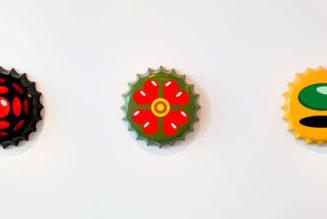
Frank Stella, the pioneering American artist best known for his minimal abstract paintings, passed away over the weekend at his West Village home in New York, age 87. The late artist’s wife, Dr. Harriet E. McGurk, told The New York Times that the cause of death was due to complications with lymphoma.
Hailed as the ‘Father of Minimalism,’ Stella is one of the most important figures in the U.S. post-war art scene. He signaled an end to the loose and gestural tenants set forth by the Abstract Expressionists during the 1950s, in favor of a cool, calculated aesthetic that emphasized rigid geometric patterns, precise line-work and vibrant color combinations that were partly inspired by his formative years painting houses and boats in his hometown of Malden, Massachusetts.
“Frank Stella is not interested in expression or sensitivity,” wrote friend and fellow artist, Carl Andre, for Stella’s 1959 MoMA exhibition. “He is interested in the necessities of painting….His stripes are the paths of brush on canvas. These paths lead only into painting.” While his artwork titles were largely symbolic, Stella famously brushed off any overarching meaning that he wanted to his viewer to receive, instead saying: “What you see is what you see.”
Towards the back end of the ’60s, Stella introduced his famous “Protractor” series, which consists of a number of colossal paintings of semi and half circle canvases, interspersed by varying color palettes that evoke themes of stability and instability, reminiscent of bicycle wheels strolling in motion.
A constant innovator, Stella abandoned the flat plane to start tinkering with assemblage sculptures in the ’70s and ’80s. One of his last shows, Frank Stella: Recent Sculpture, currently on view at Jeffrey Deitch New York until May 18, showcased a series of undulating maquette sculptures that were created by utilizing the latest in 3D printing technology. Rather than paint a painting, Stella strove to “build” one instead, even in old age.
“I’m not a legacy person,” Stella modestly remarked in a previous interview, adding that “It would probably be a lot more satisfying to people if I started out like this [creating radical sculptures] and then ended up with the Black Paintings. If you played my career back the other way, people would say, ‘Look how fantastic he ended up with those beautiful paintings at the end.’”
Stella is survived by his wife, Dr. McGurk and their five children Patrick, Rachel, Peter and Michael.









